I’ve always been fascinated by the aquatic world beneath the river’s surface, which can seem like a mysterious and hidden realm. However, with a little effort and curiosity, it’s easy to build an appreciation of the underwater ecosystem teaming with aquatic insects.
1/2 hour of Kick Sampling will turbo-charge your catch!!
So, let’s dive into exploring this fascinating world through kick sampling, and why an understanding of the aquatic invertebrates is crucial for a fly angler’s success at catching trout and grayling.
Why insect entomology matters to fly anglers:
A good understanding of the aquatic insects is crucial for a fly angler’s success because these bugs make up most of a trout or grayling’s diet. Therefore, knowing the type of insects that inhabit the river you’re fishing will help you select the appropriate artificial flies (dry, wet, or nymph), and increase your chances of catching trout and grayling.
Also, the presence or absence of freshwater invertebrates, such as caddisfly larvae, mayfly larvae, stonefly nymphs etc., indicates the rivers’ health.
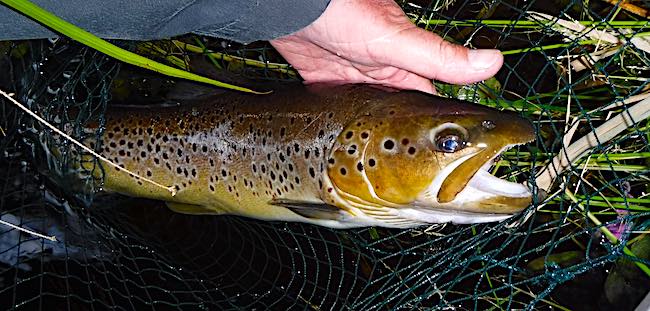
Procedure and Essential Equipment for Kick Sampling
The kick sampling equipment you need depends on what you’re trying to achieve, and I break this down into two objectives:
- A quick assessment to guide fly selection while out fishing.
- Detailed study to understand the diversity of aquatic life in the river.
1. Kick Sampling On-the-Go (Stone Washing):
When I’m faced with fishing a new river or beat, I normally take the time to determine what aquatic insects are present, which guides my fly selection when flies are not hatching. This can simply be done by lifting a few stones out of shallow riffles above pools to see what insects are crawling on their underside.
A quick assessment of the aquatic insects while out fishing can be achieved with a few bits of kit that easily fit into your fly bag or a large coat pocket:
- A clear plastic takeaway box,
- 5ml white plastic medicine spoon,
- Plastic pipette,
- Smartphone (macro camera setting),
- Digital microscope (optional)
On free-stone rivers, you can avoid the need for carrying a kick net in which you sample the river.
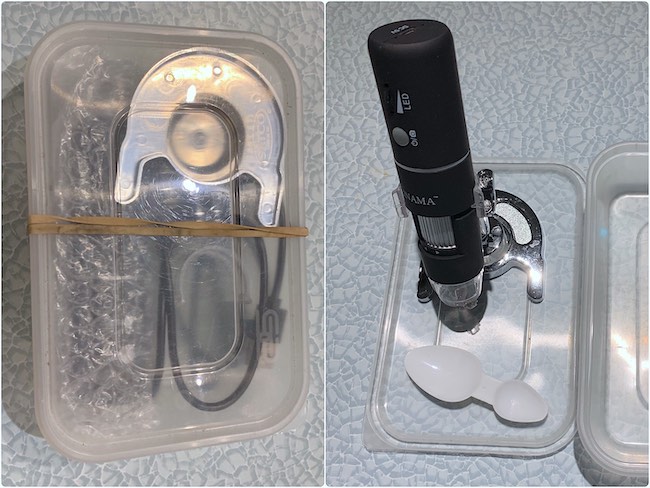
Stone Washing Sampling Procedure
I use the quick method to understand the fly life present in shallow riffles above large pools. The beauty of this approach is that it can be done with minimal disturbance to the riverbed.
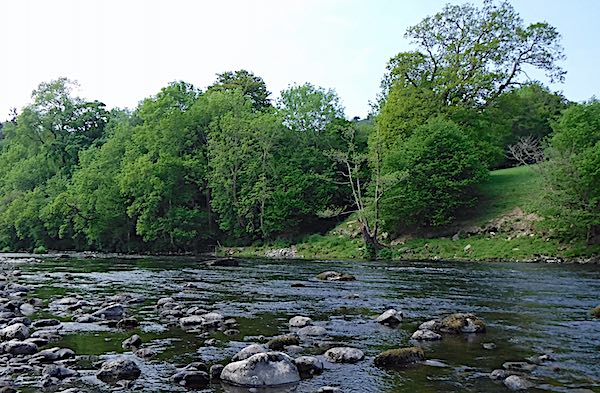
- Select a spot in the riffle that contains hand-sized submerged pebbles.
- Quickly, lift the pebble from the river and while holding over the plastic tray wash the stone with a handful of river water, collecting the washing in the tray.
- Most of the nymphs on the pebble will be washed into the tray.
- Using the pipette transfer the nymphs to the 5ml medicine spoon.
- Take a picture of the insect with your smart-phone
- Repeat until you’ve taken pictures of a representative sample of the collected insects
Examples of the aquatic insects that I have found using the stone washing method and photographed with my iPhone include…
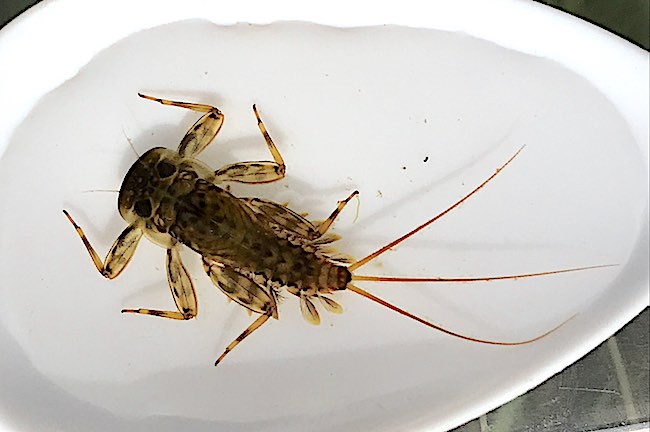

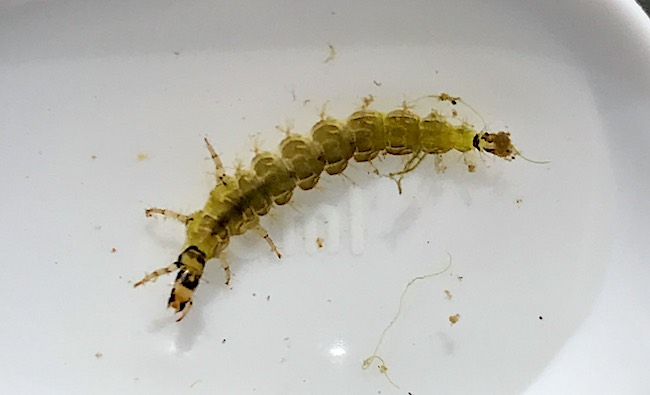
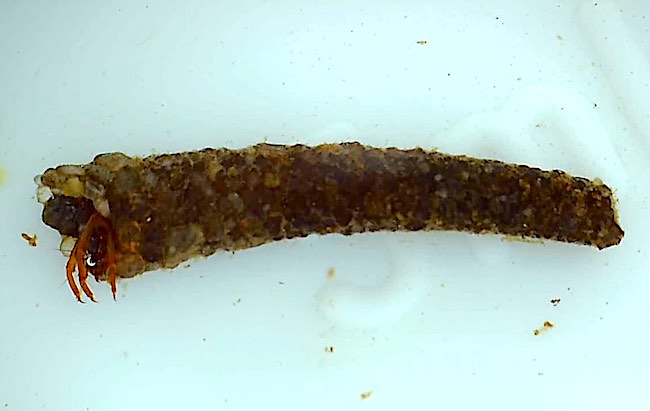
Pros & Cons of the Stone Washing Method.
| Pros | Cons |
|---|---|
| Quick to do while out fishing. | Limited to sampling rocky shallow riffles |
| Minimal equipment is needed. | Unable to evaluate weed beds or areas with fine gravel or silt. |
| Minimal disturbance to the river. | Not suitable for a detailed study |
| Great for a beginner |
2. Detailed Kick Sampling Aquatic Insect Survey
The stone-washing method is confined to sampling shallow riffles and gives details on the insects that live there. However, in order to provide a more complete analysis of the insects living in the river, a more detailed kick sampling survey is needed, which is more involved and needs more equipment.
Equipment Needed:
- A fine mesh kick sampling net
- Wading gear (waders and boots)
- 5 litre collecting bucket
- A shallow sorting & specimen trays
- Sampling Pipettes & small tweezers
- Magnifying glass,
- Digital microscope compatible with a Smartphone
- Recoding charts
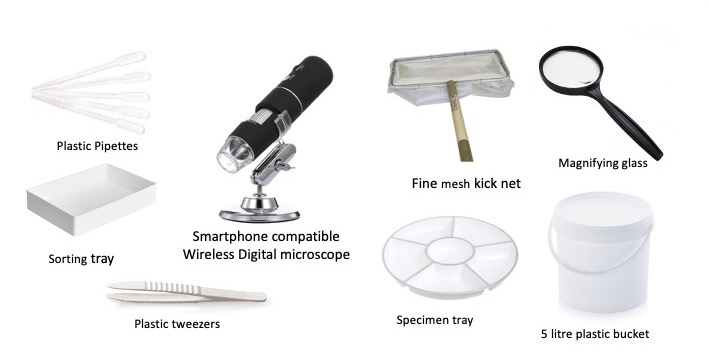
Procedure:
- Find a suitable spot in the river. Riverbeds with moderate to sluggish flow and boulders or gravel are suitable.
- Stand in the river and hold the kick net facing downstream. Gently kick the gravel, rock and silt upstream of the net.
- After about a minute of kicking, gently lift the net and put the collected sample in your tray or bucket. You want to collect the insects that are lurking within the silt, so don’t disrupt it too much.
- Sort and examine the collected material with a pipette or tweezers. Examine the water for aquatic insects, larvae, nymphs, and other macroinvertebrates. To get a better view, use a magnifying lens.
- Record the insects you find, noting their size, colour, and any distinguishing features. Ideally, take photos with the digital microscope for species identification at home.
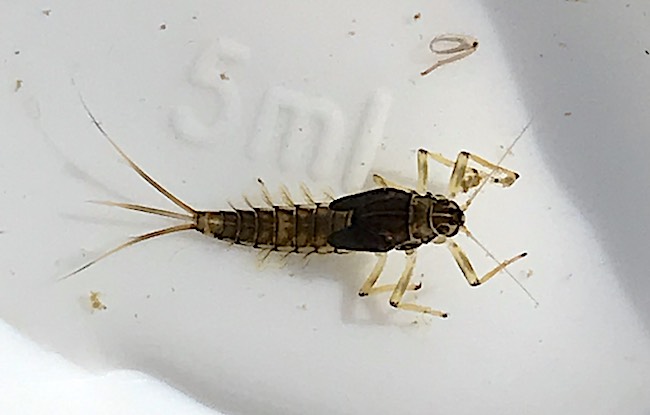

All the images of aquatic insects seen above were captured with a modern smartphone, but if you want to view the insects in greater detail, a portable digital microscope is worth the investment.
The images below show an Olive Upright nymph at various phases of development. From a juvenile nymph on the left to an adult nymph with completely developed wing buds on the right.
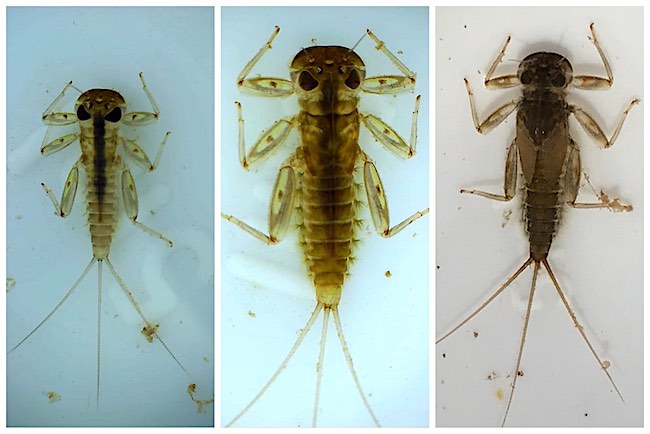
Pros & Cons of the Detailed Kick Sampling Method.
| Pros | Cons |
|---|---|
| Suitable for most river types & areas | Bulky equipment is required |
| Produces a detailed survey. | Ideally, requires at least two people |
| Time-consuming |
Putting your insect knowledge into action
Once you’ve gathered and identified insect specimens, you can apply this knowledge to improve your fly fishing success in a number of ways:
- Fly Selection – This enables you to choose fly patterns that closely imitate the insects you’ve identified. Matching the size, colour, and behaviour of the natural insects increases your chances of fooling fish.
- Timing Your Fishing Trips – Plan your outings to coincide with insect hatches. Knowing when certain insects are most active will help you be in the right place at the right time.
- Reading the Water – Use your insect knowledge to identify feeding zones and likely fish-holding areas. Trout and grayling often position themselves strategically to intercept drifting insects.
- Record and Learn – Keep a fishing journal to track your bug-sampling findings and fishing results. Over time, you’ll build a valuable database of insect activity and its impact on your fishing success.

Conclusion
Kick sampling is a powerful tool in the fly angler’s arsenal, offering a deeper connection to the river and its inhabitants. By understanding aquatic insects and their role in the ecosystem, you gain a deeper appreciation for the intricate balance of nature. More importantly, you unlock the potential to become a more successful and skilled angler.
So, the next time you’re on the riverbank, take a moment to peek beneath the surface. Explore the fascinating world of aquatic insects, and let their secrets guide you towards unforgettable fly fishing experiences.
Happy fishing!
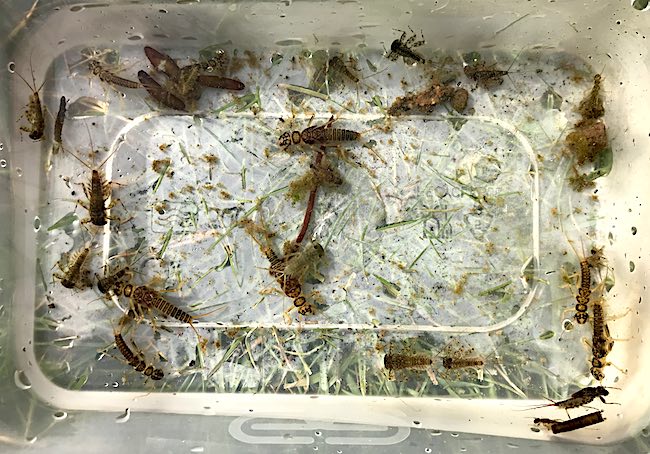
Check out:: https://sdacriverinvertebratelarvae.com/
Hi res images for identification.
Thanks
Hi Andrew, very interesting! Could you suggest suitable artificials, that represent each of your pictured live specimens? It would be most useful! Thanks. Paul
Brilliant and very useful article, looking forward to putting it into practice if my local river ever clears up after the recent spell of rain!
Hi Rob,
Great to hear you found it interesting.
Tight lines, Andrew